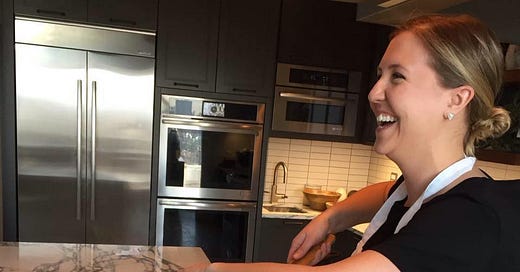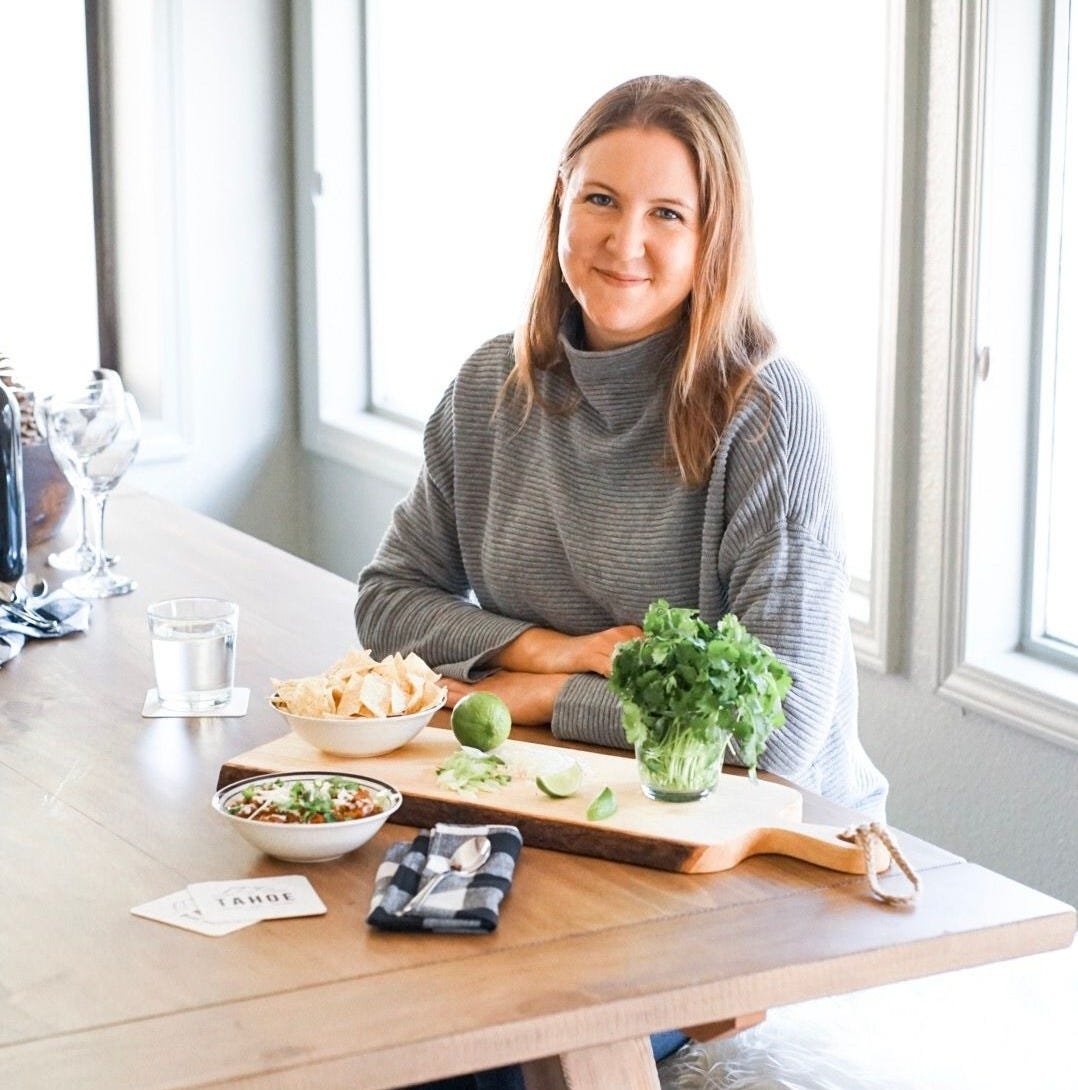Why is telling a food story so hard?
Chef Clare Langan shows us how to taste through our phones
Telling a story requires you to appeal to the senses, which can be hard when a digital platform makes it very difficult to appeal to taste, smell, touch. (Sound, of course, is why ASMR took off; sight, no comment necessary.)
I’ve always been fascinated by this challenge, which is part of why I decided to lead the creative content team at Williams Sonoma for two years. There, I worked with Clare Langan, who most recently held the role of Director of Content before managing her own shop as Freelance Culinary Content Strategist. Clare has deep content and food experience (she’s a professional chef!) so I knew she’d have unique POV on how to tell the best stories around food.
Your expertise is in food content. What makes food different (if at all) from other content out there?
Everybody eats! Food content has multiple entry points, from travel to science to more traditional, recipe-based home cooking. If you’re even vaguely interested in food, there’s a piece of food content for you.
For something that is so contingent on taste and smell, which of course you can’t (yet) experience digitally, how do you creatively go about this? How do you avoid fatigue of a chef constantly saying “wow it tastes so good”?
When it comes to food video content, the “big bite hero shot” is real. You know the one. Within the first few seconds, the creator takes a bite, curls their finger over their mouth as they chew, nodding and/or rolling their eyes to signal that it’s just SO GOOD.
I appreciate creators who include more emotion and storytelling in their hooks - Olivia Nocena is a pro at this. Expanding your culinary vocabulary to include evocative descriptors is another way to go. I see among pro-cook-turned-creators, like Zaynab Issa.
What is your favorite type of food content? Why?
Right now, I am loving grocery store content. There is skill in meal planning and shopping especially when food prices continue to inch up. I appreciate creators who are sharing tactical tips for shopping smart and preventing food waste. See: Will Coleman’s 6 to 1 Grocery Method and Justine Doiron’s grocery haul Stories.
What type of content in your career have you seen top performance with?
To tie into your earlier Q about taste and smell, I followed my nose, literally, resulting in a viral video series based on aroma. In my previous role on the content team at Williams Sonoma, I created the Le Creuset Simmer Pot video series, branded “How to Make Your Home Smell Like a Williams Sonoma” to evoke the experience of walking into a WS retail store. Starting with the brand’s signature scent (I literally called a local store to get the recipe!), we rolled out different recipes seasonally.
We furthered its impact by aligning the popular series with Le Creuset’s exclusive colors, ensuring priority product experienced more than 20M combined views on IG alone. Vanity metrics aside, there was a marked lift in ecomm sales driven by click-throughs to site to get the ‘recipe’ and browse Dutch ovens.
What is non-negotiable when it comes to brand marketing?
One, use data to your advantage. You don’t need to reinvent the wheel. Free search insights on TikTok, Google Trends, Pinterest and yes, even the IG Explore Page, should be used to guide content decisions. The knowledge that Google searches for Beef Stew and Dutch oven recipes pop off around the 2nd week of November can help you determine when to publish to site (for SEO) and post on social.
Two, be adaptable. From jumping on the latest social platforms, to shifting from longform horizontal video to short form vertical, the key to longevity in the content space is adaptability. Even if you are a legacy brand, you will quickly become irrelevant, and lose out on new customer acquisition, if you are slow to change. I read Rachel Karten’s Link in Bio and Lia Haberman’s ICYMI Newsletters to stay in-the-know.
Why is the creator economy so important for the food industry?
Consumers are smarter than ever, and they know when they are being sold to. Digital content shifted around 2018/2019 away from restaurant chefs, editors and big brands as the most influential people in the food industry, towards creators. This trend went wild in 2020 due to the rise of TikTok, leveling the playing field to anyone with an iPhone. I think a lot of creators are natural connectors, and bring an honesty and vulnerability that builds trust and loyalty with their audience.
What’s your advice for brands working with creators?
Chill out on the briefs! A common phrase in the content space is “create the sandbox and then let them play.” When drafting a content brief, include guidelines rather than scripts. Pull visual reference from the creator’s own accounts. You are hiring them for a reason. Give them permission to be themselves. The work will be better for it.
What should brands look for when they’re getting creators to work with?
Take the extra step and look beyond their personal accounts. Check out their website or request links for relevant work. Many creators, particularly ones with UGC or in-house experience, may not publish everything on their owned pages, have an agent or be on every influencer platform (raises hand!) Don’t just work with the same creator your competitor is working with - dig a little deeper.
How are you using GenAI in your role, if at all?
I started dipping my toe into Gen AI in my last Content Director role, mostly for ecomm/social copy and outlining meetings. There was no formal training, or direction from a business aid/business risk POV. I found that puzzling. See: my thoughts on adaptability above! These days, I use it in my business for efficiency, like jump-starting LinkedIn posts, optimizing web copy for SEO, general copyediting, outlines and content calendaring.
How do you stay inspired?
Substack is MAJOR for food content, and harkens back to food blogs of the early aughts. As food social video content continues to dominate, longform writing is a welcome respite for many creators to dig in deeper with their audiences. A few letters I love: chef Clare de Boer’s The Best Bit (simple recipes), From the Desk of Alicia Kennedy (food culture) and Leslie Stephen’s Morning Person (lifestyle).
Learn more from Clare by visiting her site and subscribe to her Substack, On Cooking.






Thank you for a great chat! And thrilled that it came to life on this platform, where food stories shine.
Loved this post so much. Grocery lists are truly ART, and the invisible labor of planning these out do not go unnoticed by ME.
Also, Speaking of food stories, join TABLEFABLES y’all!!!
We be sharing stories about food memories. It’s lots of fun 🤩
https://open.substack.com/pub/tablefables/p/discussion-is-food-a-magician?r=1h5ka1&utm_medium=ios